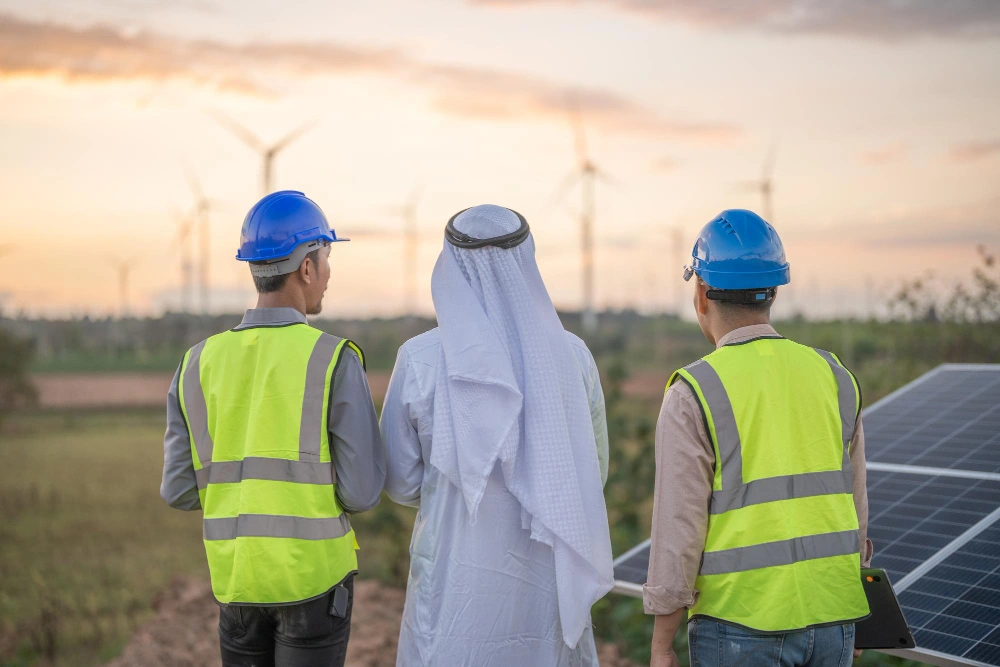The transition to renewable energy has taken on tremendous importance since we now live in a time when the adverse environmental effects of conventional energy sources are indisputably evident. It is now essential to embrace clean, sustainable energy solutions. Solar, wind, and hydropower are just a few examples of renewable energy sources that have been highlighted as the energy of the future.
Table of Contents
The Growing Importance of Renewable Energy

1. Global Scenario
Global views on renewable energy are changing. The urgent need to switch from reliance on fossil fuels to renewable resources is becoming more widely acknowledged. Even if the change is difficult, renewable energy’s sustainability, minimal environmental impact, and energy security make it necessary.
2. Middle Eastern Perspective
In the Middle East, historically known for its vast oil and gas reserves, the renewable energy transition is taking shape. Countries like Saudi Arabia are realizing that their conventional resources, though enormous, are finite and depleting. Hence, they are putting more emphasis on developing renewable energy infrastructure, particularly solar energy, a focus clearly illustrated by the work being done at Clean Tech.
Arid Regions and Solar Energy: A Perfect Match

Unique Characteristics of Arid Regions
Arid regions, such as deserts, have specific characteristics that make them ideally suited for harnessing solar energy. These include high sunlight exposure, vast open lands, and minimal cloud cover – conditions that provide a natural advantage for solar power generation.
The Science of Solar Power in Deserts
Solar power generation in such regions can achieve efficiency levels that are virtually unattainable in other geographies. Because of the high sun exposure and minimal cloud interference, photovoltaic panels in arid areas can capture and convert sunlight into electricity more effectively.
Saudi Arabia and its Renewable Endeavors

Pioneering Solar Energy
The Middle East’s renewable revolution is led by Saudi Arabia, which utilizes solar energy to exploit its abundant sunshine and huge desert landscapes. The Kingdom is investing significantly in constructing cutting-edge solar generating facilities to show the world renewable energy.
Technological Advances and their Role
Technological advancements have played a pivotal role in facilitating Saudi Arabia’s successful foray into solar power generation. Companies like Clean Tech, for example, offer innovative solar energy solutions, from efficient solar panels and inverters to sophisticated power storage systems, contributing significantly to the Kingdom’s solar energy journey.
An In-depth Look at Solar Energy Solutions

The Importance of Sustainable Solutions
Sustainable solar energy solutions are paramount to addressing the world’s energy challenges. These solutions not only help meet current energy needs but also ensure future generations’ ability to meet their own needs without compromising the health of our planet.
The Impact of Solar Energy Solutions on Productivity
Harnessing solar power efficiently can unlock tremendous productivity by reducing dependence on fossil fuels, cutting energy costs, and driving economic growth. It can also contribute to job creation in the renewable energy sector, further boosting economic productivity.
Challenges and Solutions
The Obstacles Faced in Implementing Solar Power
Despite the clear advantages, implementing solar power in arid regions is challenging. These include technical issues like the impact of high temperatures on solar panel efficiency, economic considerations like high initial investment costs, and environmental concerns such as the potential impact on local ecosystems.
Potential Solutions and Strategies
Nevertheless, new approaches and technological advancements can lessen these difficulties. To overcome these challenges and advance solar energy solutions, it may be essential to continue research and development in the field of solar technology and support public policies and public-private collaborations.
The Future of Solar Energy in Arid Regions
Predicted Trends and Developments
Solar energy has a promising future in dry areas like Saudi Arabia. We anticipate that these areas will substantially impact the global renewable energy environment due to ongoing advances in solar technology and rising investments in renewable energy infrastructure.
Conclusion
In conclusion, sustainable solar energy is promising for increasing production and fostering a more sustainable future in desert countries like Saudi Arabia. These areas can be essential in accelerating the global switch to renewable energy by continuing to invest in and develop cutting-edge solar energy technologies.
FAQs
Why is solar energy necessary for arid regions?
Solar energy is critical for arid regions because these areas receive abundant sunlight, making them ideal for efficiently harnessing and generating solar power. This can lead to energy security and economic growth in these regions.
How does Saudi Arabia leverage its geographical conditions for solar energy?
As a predominantly desert country, Saudi Arabia leverages its geographical conditions by utilizing its vast, sun-drenched landscapes to install solar power plants. The high sunlight exposure allows for the efficient generation of solar power.
What are the potential challenges in implementing solar energy solutions in desert regions?
Challenges include technical issues like the impact of high temperatures on solar panel efficiency, economic considerations like high initial investment costs, and environmental concerns like the potential impact on local ecosystems.

